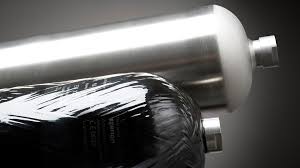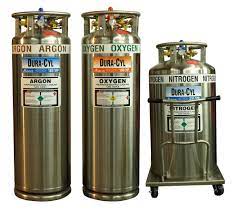
Cylinder Inspection Training: Why a Maintained Cylinder Is a Happy Cylinder
Uncover the importance of gas cylinder inspections and training. Dive deep into ensuring safety, boosting efficiency, and prolonging cylinder life.
I read the article in issue #79 of X-Ray Magazine (2017) titled “UK under pressure to test cylinders annually.” It was an informative article, but it was perceived by me to be unfairly attacking standards in the U.S. The way I understand it; in the U.K., a SCUBA cylinder undergoes a visual inspection every 30 months and a hydrostatic requalification every 5 years. The U.K. dive industry was upset that the ISO was looking at an annual visual inspection standard for cylinders. I prefer not to get into some of the specific arguments since they are subjective, but I would like to address the misinformation on how annual cylinder inspections are conducted in many countries.
I read the process that the Inspectorate for Diving Equipment Servicing and Testing (IDEST) requires for a SCUBA cylinder inspection. It is a very thorough inspection and I support all the steps. My concern comes when the article mentions cylinders inspected in the United States (U.S.) “the valve is whipped off, a technician takes a look and puts the valve back in.” This could not be further from the truth. We follow all the steps listed by IDEST apart from the mandatory use of a Go/No Go gauge for the threads and mandatory valve rebuild.
I am not saying that the use of Go/No Go gauge is not beneficial. There have been several incidents when the wrong valve is placed in the wrong cylinder. That in turn damages the threads and makes the cylinder unsafe and creates the possibility of a rupture. However, if an untrained person forces the wrong valve on the cylinder, at some other point in its use after the inspection, then no training can predict that error. During a proper visual inspection, with or without a gauge, the damage to the threads should be obvious to any properly trained inspector.
We also train inspectors in the process of rebuilding valves. It is not mandated to rebuild the valve if it is working properly. The cylinder inspectors are trained to test the valve and determine their continued safe use. They can voluntarily take it upon themselves to repair or rebuild the valve or tell the owner that the valve did not pass and therefore was not placed back on the cylinder. In either circumstance, it is documented on the inspection form and final determination is made by the inspector and user.
Another quote from the article which bothered me was; “This new ISO standard that is being driven by a number of nations, including those that primarily dive with aluminum diving cylinders, where there have been issues with cylinder necks cracking.” I don’t know of a nation which primarily dives with aluminum cylinders. There are currently steel, aluminum and composite cylinders approved for diving. Each one of these materials has its positives and negatives; and the diving consumers generally drive the market. Some like steel for the buoyancy characteristics, others like aluminum because of its corrosion characteristics and others enjoy composites because of their weight and increased pressures. However, all cylinders have their concerns when placed in the hands of users.
The stated issue of cracks in the necks of aluminum cylinders was years ago and involved only one specific alloy. Even within that alloy, ruptures are rare. Out of over 40 million cylinders manufactured with the 6351 alloy only 20 were suspected of rupturing due to cracking (web stats). So, using the math, that is less than a .0000005 % chance of a rupture with that one specific alloy. I like to state that ALL cylinders are safe; if inspected regularly, used properly and removed when they become unsafe.
The article also states that 75% of cylinder failures are due to issues with the threads. I cannot dispute that claim without seeing the data being mentioned. Without seeing the specific data I would guess that part of the issue is machine marks in the threads. There is a common concern when inspecting a cylinder’s threads and interpreting the results. We find that many people see a TAP STOP mark, and unjustly name it a crack or flaw within the threads. A TAP STOP is simply a machining mark and has no effect on the structural integrity of the cylinder. I would say that TAP STOP marks are common on many cylinders, and not a reason to fail a cylinder. I state that all cylinders have a rare probability of cracking; whether they are aluminum or steel. Other flaws in the cylinder threads (improper valves) are normally caused by the user and should be caught by the inspector during the visual inspection process.

The article also states that in the U.S. cylinders are not all treated the same way and there is a classification for “sport and recreation.” I have never heard that phrase and have no idea where it would have been found. In fact, when we train visual inspectors, we train them to inspect all cylinders regardless of usage. A cylinder may be used in the SCUBA, fire service, beverage or scientific industries. It does not matter what industry, all that matters is that the cylinder is safe to use. That is determined by wall thicknesses, obvious dents, threading concerns or other safety concerns noted during the inspection. I can more easily argue that most cylinders are “commercial cylinders” since they are all used in industries that exchange commerce.
I don’t know if the proposed standard would have put the divers at risk. The article makes the argument that with an increased cost of an annual inspection the divers would have found ways to avoid the new procedures. The question should become; what fee is the consumer charged for the annual inspection? Since the article has already focused on the U.S. I will use some pricing from that area. Depending on the inspection facility the consumer pays $15usd – $25usd for an annual inspection. They then pay an additional fee of $20usd-$25usd every five years for the hydrostatic requalification. It has been my experience that most divers have no problem paying $25usd every year to ensure the safety of their cylinders. And I can also say that paying $25usd per cylinder per year is a LOT less expensive than buying and maintaining a personal compressor system.
My final point I will make about the article in X-ray magazine, is for the benefit of an annual inspection. In my experience, many issues have developed within a cylinder within a year’s period. The attached photo shows excessive aluminum hydroxide corrosion I found in a cylinder within 365 days of its previous inspection. Also, back in the 1970’s, the University of Rhode Island found that corrosion in a steel cylinder can affect its gas content and corrosion factors in as little as 100 days. A well-maintained cylinder can go years with no issues. A misused, neglected or abused cylinder can be compromised well within a 30-month inspection cycle.


I enjoy continuing to build the business based on safety since 1999. CTS focuses on the inspection of high pressure cylinders, the maintaining of the valves and basic maintenance of high pressure compressor systems. CTS stays current in techniques and tools to train both the new and novice employee. We publish articles, update training tools and have created an APP to assist during the inspection process.
#cylinder #safety #hazmat #training #cylinderinspectiontraining #cylindex

Uncover the importance of gas cylinder inspections and training. Dive deep into ensuring safety, boosting efficiency, and prolonging cylinder life.

Is your composite cylinder showing signs of wear? Discover when to seek a professional repair service in our comprehensive guide.

29 CFR 1910.101 intro Handling cryogenic cylinders involves working with extremely low-temperature gases that pose unique safety risks. To ensure the safe handling, storage, and transportation of these hazardous materials,

Introduction Firefighters encounter many risks while on duty, including hazardous materials and high pressure bottles. High pressure bottles are used for a variety of purposes in firefighting, including powering hydraulic